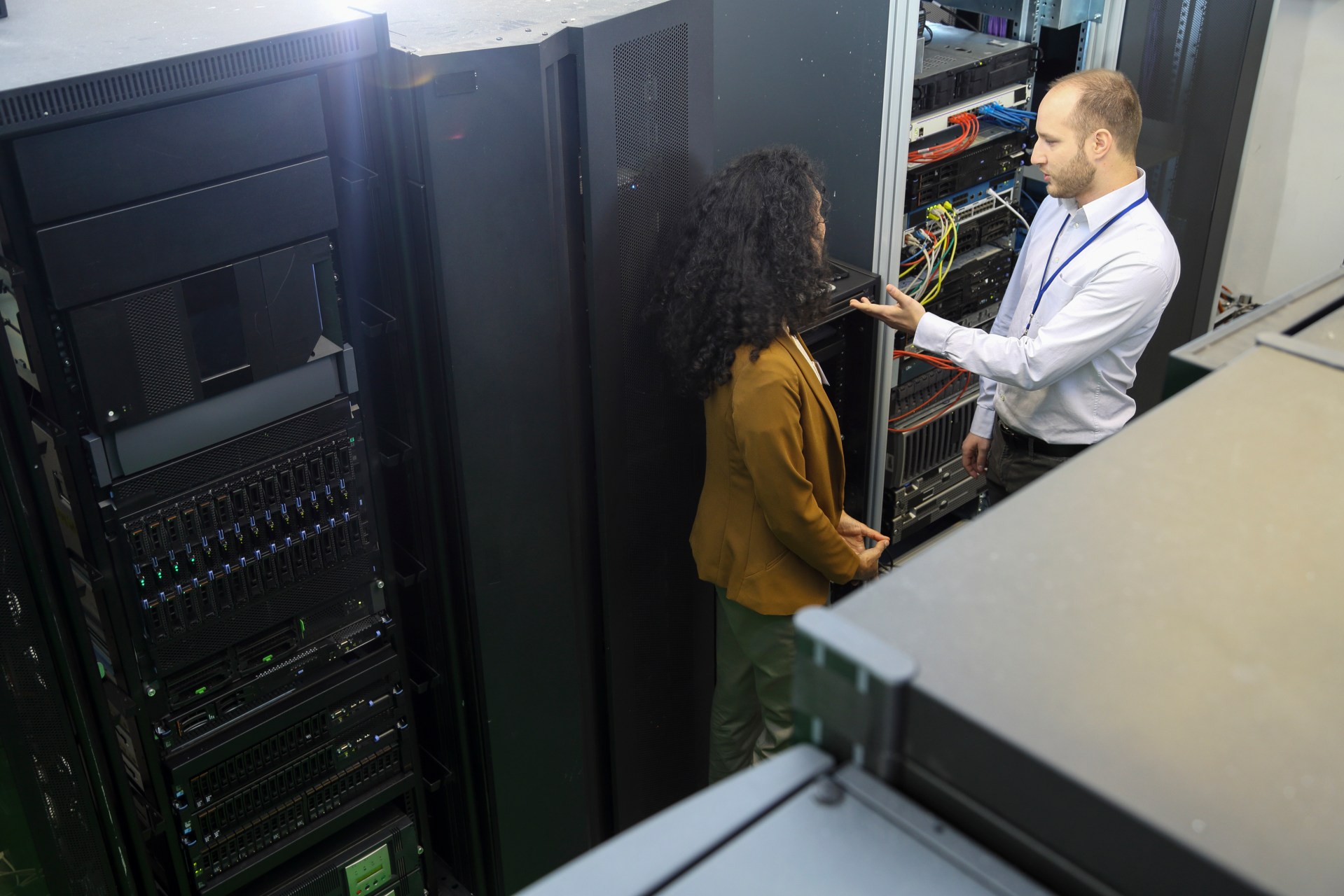The Internet of Things (IoT) is a network of interconnected devices embedded with sensors, software, and other technologies, which enable them to collect and exchange data. Here is a quick overview of how the impact of IoT is transforming the way data centers operate.
The Impact of IoT in data centers
In the context of data centers, the main purpose of the IoT is to facilitate real-time data acquisition. This is then used to enable informed decision-making by both automated tools and humans. Here are three areas where the IoT is currently making a meaningful difference in data center operations.
Maintaining uptime: Smart sensors and devices continuously gather data on power consumption, temperature, humidity, and equipment performance. This facilitates both proactive maintenance and reactive problem-solving.
Improving resource allocation: Automated processes driven by IoT data enhance the orchestration of servers, storage, and networking components. This dynamic orchestration ensures seamless scalability, efficient load balancing, and rapid response to changing workloads.
Streamlining operations: In addition to more effective automation the IoT enables better remote monitoring and simplified access control systems. This means that humans spend less time on basic administrative tasks.
Challenges and opportunities
As with any new development, the IoT brings both challenges and opportunities.
Challenges
Here are the three main challenges of the impact of IoT.
Increased vulnerability: The proliferation of IoT devices in data centers expands the potential attack surface malicious actors can target. As these devices become more integrated with critical operations, the potential consequences of a compromise become more serious.
Data overload: The integration of IoT in data centers generates vast quantities of new data. In the long term, this opens opportunities for developing advanced analytics tools and machine learning algorithms. In the short term, however, processing the volume, velocity, and variety of data can overwhelm traditional data processing systems.
Potential system disruptions: With numerous devices communicating and exchanging data, the failure or malfunction of a single node can impact the entire infrastructure. This interdependence raises concerns about system resilience and, hence, the ability to maintain continuous operations.
Opportunities
Here are the three main opportunities of the impact of IoT.
Improved energy efficiency: Smart devices can be used for continuous monitoring of environmental conditions within data centers. The data they produce enables automated climate control tools to make necessary adjustments in close to real time. This is much more efficient than operating climate control based on pre-set cycles.
Preventative maintenance: Predictive analytics fueled by IoT data enable the identification of potential issues before they escalate, allowing for timely interventions. For example, monitoring the temperature and humidity levels with precision helps prevent overheating and ensures optimal operating conditions.
Better resource management: The IoT enables dynamic adjustments to resource allocation, ensuring optimal performance and energy efficiency. For instance, sensors tracking server usage patterns can facilitate workload balancing, preventing overloads, and optimizing power utilization. Additionally, IoT-driven resource management aids in identifying underutilized assets, supporting capacity planning, and preventing resource bottlenecks.
Security implications
As with any new innovation, the IoT does have security implications. Here is an overview of the main security concerns it generates.
Authentication vulnerabilities: Weaknesses in password policies, lack of two-factor authentication, or insecure credential storage can be exploited. Attackers may employ brute-force attacks, credential stuffing, or intercept authentication tokens, gaining unauthorized entry into IoT devices and the connected data center network.
Firmware issues: Outdated firmware versions or unpatched vulnerabilities in the firmware’s code provide avenues for exploitation. Attackers can reverse engineer firmware, inject malicious code, or exploit known vulnerabilities to compromise the device’s security and potentially gain control over critical functions.
Inadequate encryption: Inadequate implementation of encryption algorithms or key management flaws may expose data during transmission. Attackers can exploit vulnerabilities in the encryption process, perform man-in-the-middle attacks, and decipher sensitive information, compromising data integrity and confidentiality.
Network configuration issues: Poorly configured network settings, such as weak access controls or open ports, create security vulnerabilities. Attackers may exploit these flaws to infiltrate the network, conduct reconnaissance, or launch attacks like denial-of-service, causing disruptions or unauthorized access to data center resources.
Privacy risks with user data: Insufficient data anonymization, inadequate access controls, or weak encryption for stored user data are potential vulnerabilities. Attackers can exploit these weaknesses to access personally identifiable information, leading to privacy violations, identity theft, or unauthorized use of sensitive user data.
Best practices for managing IoT security
Fortunately, the security challenges raised by the impact of IoT can be managed. Here are three best practices for doing so.
Proactive security measures: Organizations should implement continuous monitoring, threat intelligence feeds, and vulnerability assessments to identify and mitigate potential security risks proactively.
Encryption and authentication: Strong encryption prevents data from being read by people without decryption credentials. Multifactor authentication minimizes the likelihood that people will be able to impersonate legitimate users.
Employee training and awareness: Employees need to be made and kept aware of cybersecurity best practices and current social-engineering tactics such as phishing.







